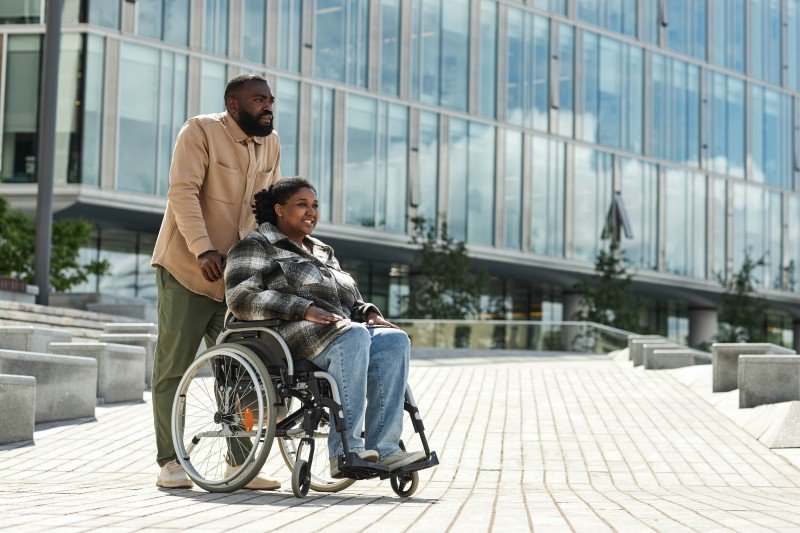Navigating the World of Mobility Scooters: A Comprehensive Guide
In a period where mobility is increasingly acknowledged as a basic aspect of lifestyle, the need for assistive gadgets has surged. Among these, mobility scooters stand apart as a flexible and empowering option for individuals with mobility obstacles. This thorough guide looks into the world of mobility scooters, using insights into their types, advantages, acquiring considerations, and upkeep ideas.
Understanding Mobility Scooters
Mobility scooters are motorized automobiles developed to help individuals with mobility problems in moving more freely and separately. They are especially advantageous for those who find walking hard due to conditions such as arthritis, several sclerosis, or post-surgical healing. Unlike manual wheelchairs, mobility scooters require minimal physical effort, making them an excellent option for extended use.
Kinds Of Mobility Scooters
Three-Wheel Scooters
- Pros: More maneuverable, lighter, and much easier to store.
- Cons: Less steady on rough terrain.
- Best For: Indoor and smooth outdoor surface areas.
Four-Wheel Scooters
- Pros: More stable, much better on rough surface, and can carry heavier loads.
- Cons: Bulkier and less maneuverable.
- Best For: Outdoor usage, particularly in parks and on irregular surface areas.
Portable Scooters
- Pros: Lightweight, collapsible, and simple to transportation.
- Cons: Limited range and speed.
- Best For: Travel and periodic use.
Durable Scooters
- Pros: Built to deal with much heavier users and rugged environments.
- Cons: More expensive and less portable.
- Best For: Users over 300 pounds or those who require to navigate rough surface.
Standing Scooters
- Pros: Provide a standing position, which can be advantageous for users who can not sit for long durations.
- Cons: Limited stability and range.
- Best For: Users who prefer standing and need short-distance assistance.
Advantages of Mobility Scooters
Improved Independence
- Mobility scooters enable users to travel longer distances without tiredness, enabling them to take part more totally in daily activities and gatherings.
Improved Safety
- With functions like safety belt, anti-tip wheels, and brake systems, mobility scooters offer a much safer option to manual wheelchairs and strolling help.
Comfort and Support
- Adjustable seats, backrests, and armrests guarantee a comfy ride, reducing the stress on the user's body.
Cost-Effective
- While the preliminary financial investment can be substantial, mobility scooters are often more cost-effective in the long run compared to regular taxi rides or specialized transport services.
Social Inclusion
- Mobility scooters help with higher social interaction by making it possible for users to engage in community activities and maintain a more active way of life.
Factors to Consider When Buying a Mobility Scooter
User Needs and Abilities
- Evaluate the user's physical condition, mobility needs, and day-to-day activities to identify the most suitable kind of scooter.
Size and Weight Capacity
- Guarantee the scooter can accommodate the user's size and weight comfortably and securely.
Range and Speed
- Consider the common range and speed required for daily usage. Some scooters have a series of as much as 30 miles on a single charge.
Portability
- If travel is a concern, opt for a portable scooter that can be easily dismantled and carried.
Upkeep and Support
- Choose a credible producer that uses trusted customer care and maintenance assistance.
Spending plan
- Set a budget plan and check out choices that offer the best value for money. Think about funding alternatives and possible insurance protection.
Upkeep Tips for Mobility Scooters
Routine Cleaning
- Clean the scooter routinely to prevent dirt and debris from impacting its efficiency. Utilize a soft fabric and mild detergent.
Battery Maintenance
- Follow the producer's standards for battery charging and upkeep. Frequently examine the battery level and avoid deep discharges.
Tire Inspection
- Check the tires for wear and correct inflation. electric mobility scooters uk or fix as needed to guarantee a smooth and safe ride.
Lubrication
- Lubricate moving parts such as the chain and equipments to lower friction and avoid wear.
Professional Servicing
- Arrange routine professional servicing to resolve any concerns and ensure the scooter stays in ideal condition.
Frequently Asked Questions About Mobility Scooters
Are mobility scooters covered by insurance?
- Some insurance coverage strategies, including Medicare, may cover the expense of mobility scooters under certain conditions. Inspect with your service provider for specific details.
Can I utilize a mobility scooter inside?
- Yes, lots of mobility scooters are designed for both indoor and outside usage. Make sure the scooter is suitable for the type of surfaces you will be navigating.
How quickly can mobility scooters go?
- The speed differs by design, but a lot of mobility scooters have a maximum speed of 4 to 8 miles per hour.
Do I need a license to operate a mobility scooter?
- In many countries, a license is not needed to run a mobility scooter. However, it is essential to follow local guidelines and traffic laws.
Can I travel with a mobility scooter?
- Lots of mobility scooters are designed to be portable and can be disassembled for travel. Contact airlines and transportation suppliers for specific requirements.
Mobility scooters are a transformative tool for individuals with mobility obstacles, providing a blend of independence, security, and convenience. By comprehending the different types of scooters, considering essential acquiring elements, and following upkeep best practices, users can take advantage of their mobility scooter and lead a more active and fulfilling life. Whether for daily commutes or leisurely getaways, a well-chosen mobility scooter can be an important buddy on the journey to enhanced mobility and lifestyle.

